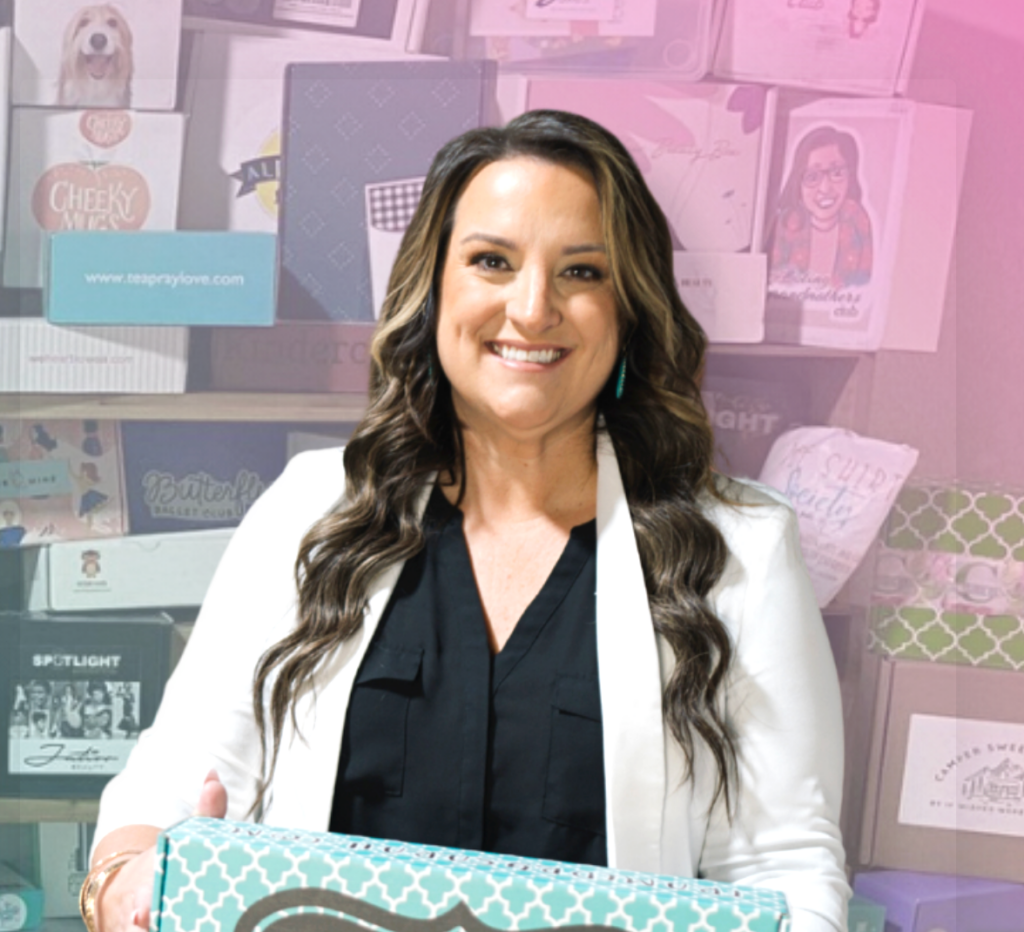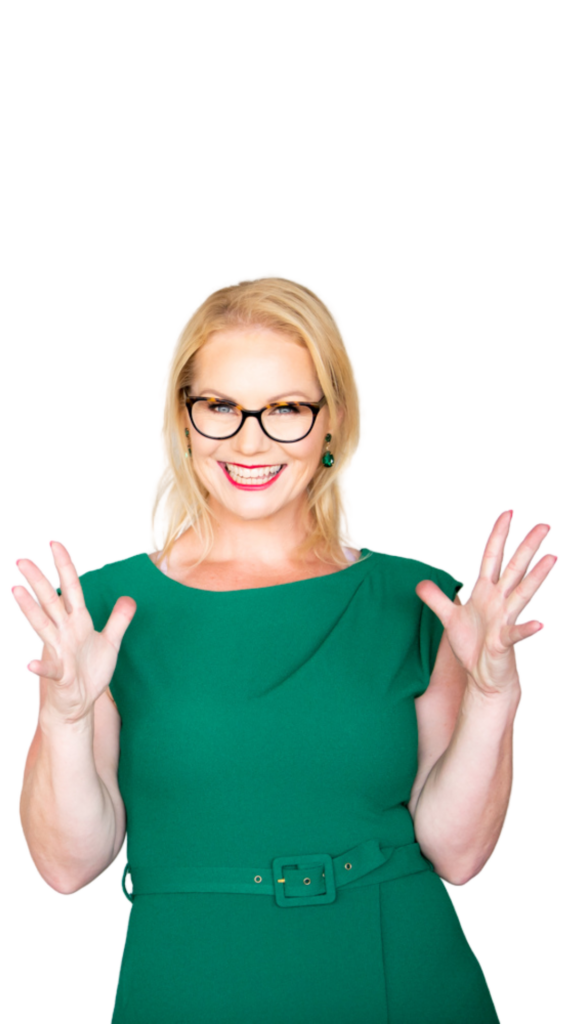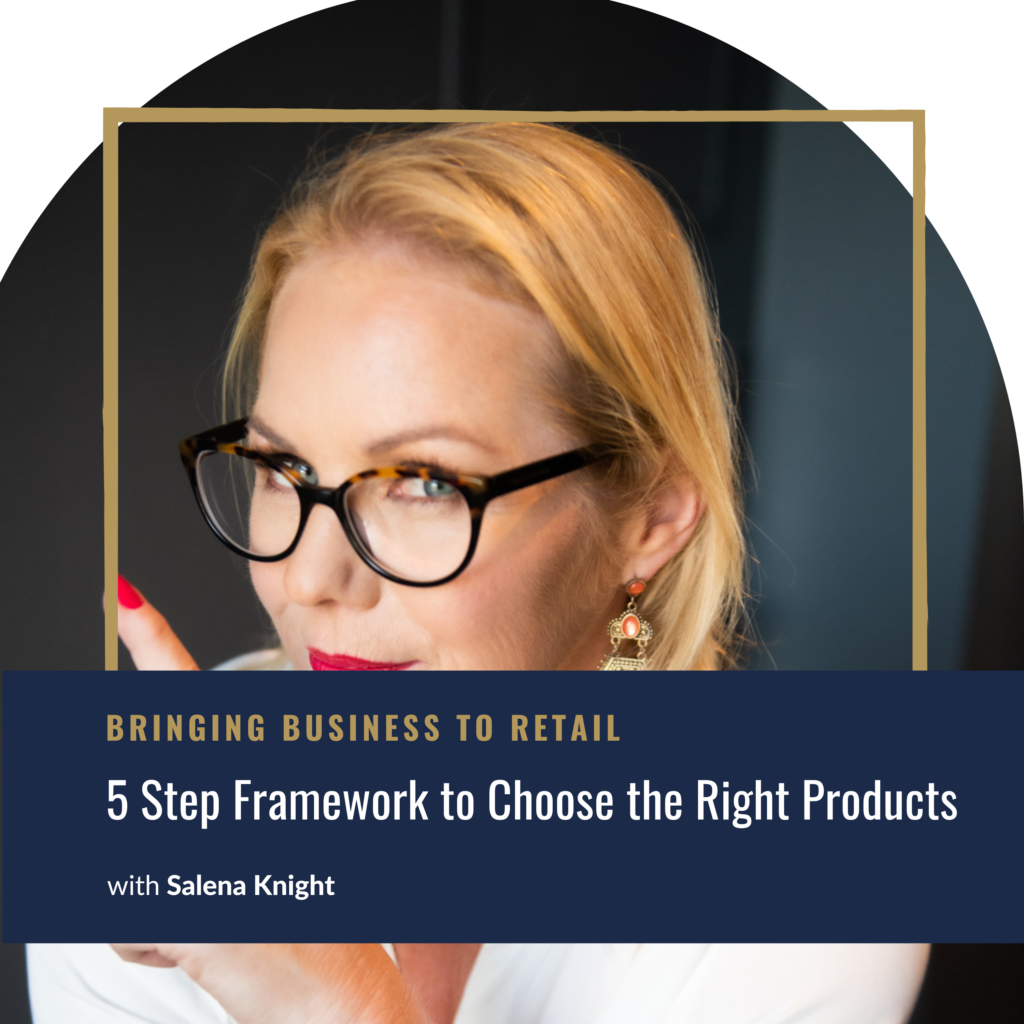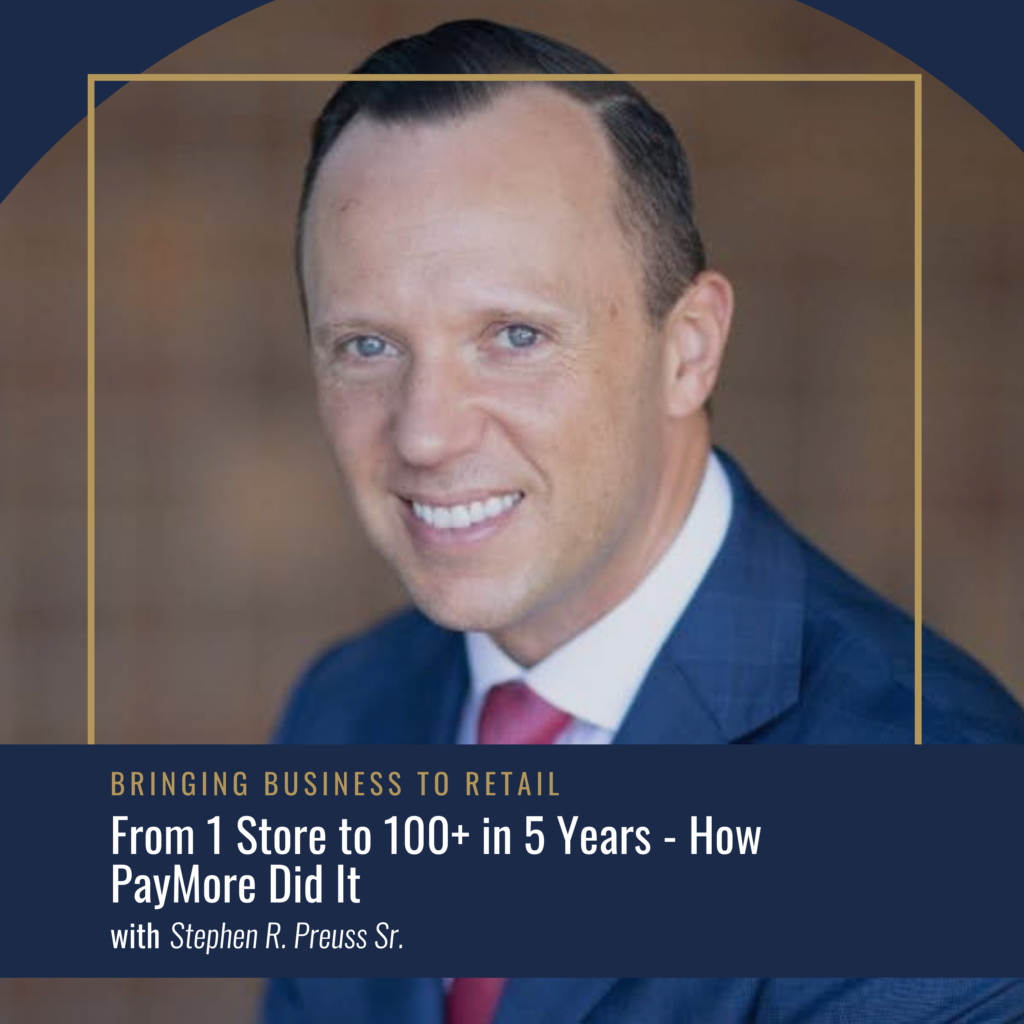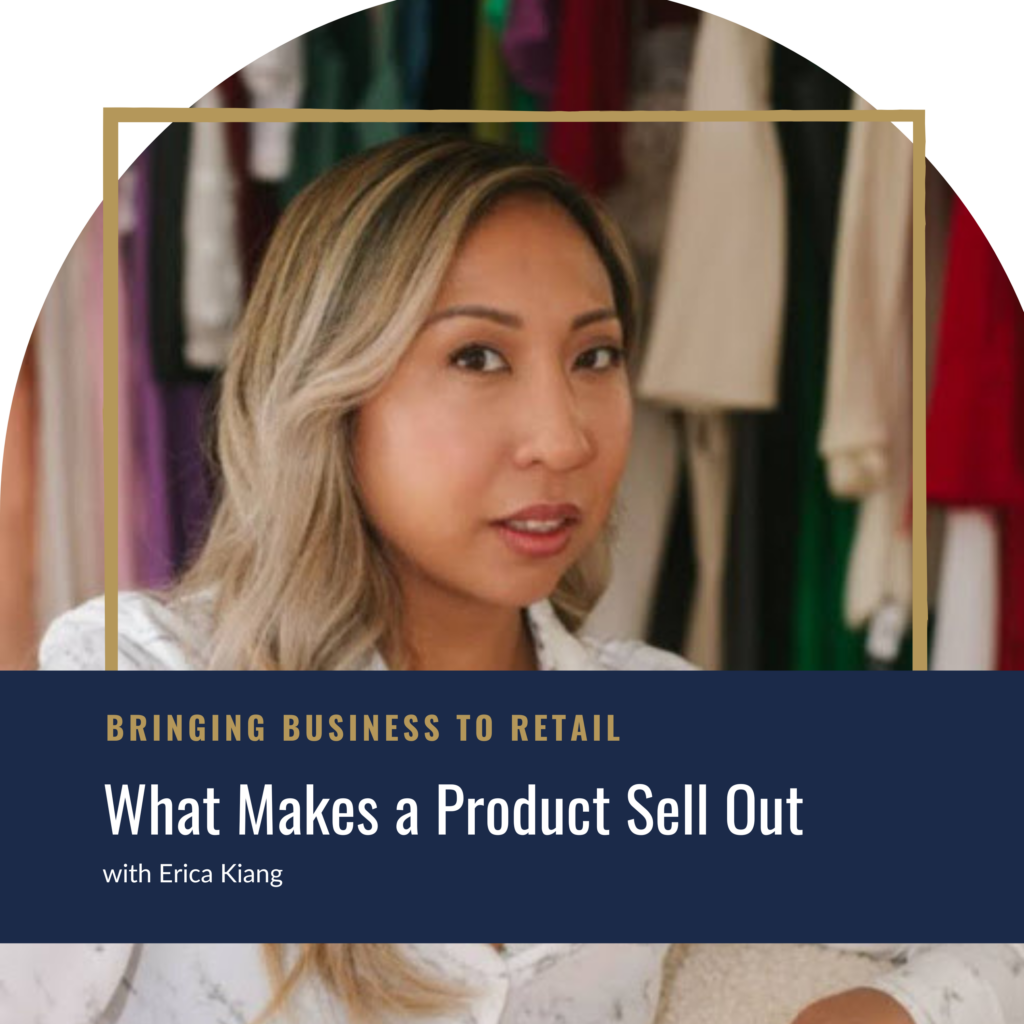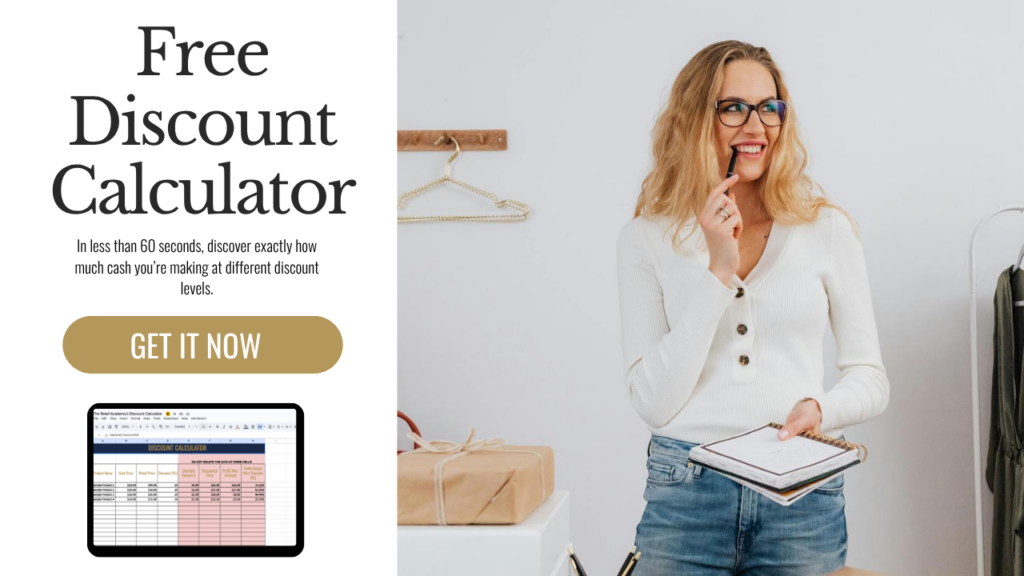
SHOW NOTES
Imagine never worrying about paying rent again — because your customers cover it every month.
That’s exactly what Sarah Williams has done with her retail subscription box business, and in this episode, she shares exactly how you can do it too.
Sarah takes us behind the scenes of how she turned a small brick-and-mortar gift shop into a subscription powerhouse — with thousands of subscribers paying every month, 67% profit margins, and an average customer lifetime of over 17 months.
What You’ll Learn in This Episode:
- How Sarah went from 44 subscribers to thousands — without paid ads
- The steps to curate a subscription box that customers love (and keep buying)
- How to price and structure your box for profit
- The secret to turning subscribers into your BEST customers
- Why recurring revenue gives you freedom to hire, expand, and stop “singing for your supper”
Whether you’re a retailer, e-commerce business owner, or product-based entrepreneur, this episode will inspire you to think about creating predictable, guaranteed revenue in your business.
Also, want to maximize Q4 this year? Join me inside the Scale Your Store Accelerator.See you in the episode,
Sal
LISTEN NOW on The Bringing Business To Retail Podcast
Imagine knowing that all of your bills were paid every single month without fail. It sounds like a dream, right? Well, not so much. In fact, for many retail and e-commerce businesses, that's their reality. Wanna know how they're doing it? Monthly recurring revenue. My friends, MRR, and today's guest, Sarah Williams, is going to walk you exactly how you can do it inside of your retail or e-commerce business as well.
Welcome to the Bringing Business to Retail podcast, Sarah. Thank you so much for having me. I'm excited to be here. I am excited because you just told me about the fact that your customers stay on average 17 months, they pay you $74 every single month, and it only costs you $37 to buy that. I do not have words for how amazing that is, but before we get to how we do it, this didn't happen overnight, did it?
No, definitely not. I started as a retail brick and mortar store. I was a local gift shop. I just had only local customers and I specialized in personalizing items. So we personalized with embroidery, with vinyl, with the DTF, with laser machines. So we personalized a lot of the items in our store for our customers.
And that's really how I got started. And there was, there was this time back in 2016, let's go all the way back. Where I, I was looking at my customer habits, right? So they would come in, I would see my customer on average about once a month, whether they were buying something for themselves or they were buying a gift for someone else.
And this is how we started to build relationships, right? As a store owner, you build relationships with people that come in and you chit chat. But what I was noticing is there was kind of these negative feelings about, oh, I saw you, I saw this on Facebook, but it's sold out. Oh, I saw this, but I didn't get here in time.
And it triggered something in me. What if I could create something that would take my best customer and make them feel like a VIP in the business? And they wouldn't have to worry about it selling out. They wouldn't have to worry about getting there quickly to buy whatever I had. And so that's where the idea came for my subscription box.
I was watching a large company. Sell a similar subscription box to the products that I had, and I just kept watching and I just kept reading the comments and I just kept thinking to myself, I can do this and I can do this better and better in a way of the way they were handling their customer service.
It was just not, well. It was a very cheap subscription. And when you have a cheap subscription, you have cheap products. And so I was thinking I could do this and give them a nice quality product and make my everyday customers feel like VIPs of my business. And that's when I started my subscription box.
Okay. Can we just back up because if you, things that you just said there that I have some questions about, first of all. You're selling mostly personalized gifts. Yep. People are coming back once a month. That seems really frequently to me. Like it seems like I don't buy, I dunno, maybe I'm a, maybe I'm not the right pers uh, clearly I was not your market, but coming back every month to buy personalized gifts sounds.
Like you were doing something really Right, right. And, and I had the gifts, but I also had a lot of trendy seasonal items, graphic tees, a lot of different things for seasonal items. We had the cups, the bags, the all the things. And so whether they were buying something for themselves or someone else, they typically added a little something on for themselves too.
But they were just coming back to see what was new, to see what I had created or to see how they could personalize something special for somebody in their life or themselves. Okay. So the next thing that you had said was that you kept selling out. Now this is just, you know, it's just kind of like a light bulb going off on my head because as we're recording this, maybe not when people are listening, but as we're recording this, we are in the middle of our double my holiday sales bootcamp.
And one of the conversations that has come up over and over again is how someone mentioned that they sold out of a product. And I said, so how much money did you lose? And she said, no, no, I sold out. And I went, yeah. So how much money did you lose because you sold out and, and it took a little moment, but then it was like, oh, right, because I only had x number of units.
I probably could have sold a lot more. And so you, you worked that out, you know, 10 years ago, which was like, huh, I'm losing money because I'm selling out, but I'm also upsetting my customers. And there is that really fine line, like, I appreciate that new products and product drops and keeping customers interested is a business model in and of itself.
And you do have to. I guess sell out to keep that business model, to keep those customers hungry. But there is that fine line between doing that and how much money did I lose? Right? And then there's the negative feelings that they're feeling like, well, I won't even go buy there because they'll always sold out.
Or the negative feelings that I was feeling like I was disappointing somebody that was coming in. So there was that kind of negative feeling, like how do I remove that negative feeling? Because you and I both know we could go to market, we could buy a whole bunch of stuff for our shops. We really actually never know what's gonna be the sellout product.
And so that's what happens. We may choose five products, the one we love, we buy triple, you know, depth, quantity in, and it's the one that sits on the shelf. And the other two that you only bought one pack of. Are the ones that sell out every time. Every time. So it's a hard to do. It's hard to judge that, right?
And so, especially as a small business owner, like you just don't have endless amounts of money to test and try all this stuff. So that was something that I was like, Hmm, how can I make this better for me and for them at the same time? Okay, so we. Have realized that there's money sitting on the table and we're going to do something about that.
We've realized that we could be upsetting our customers, which is money that we're potentially losing. The other thing that you just mentioned there was that somebody else was doing this, so it was a proven concept, but they weren't doing it well. You knew you could do it better, but you did say that you, you kind of stalk them Great.
Yeah. To see. What they were doing well and what they weren't. Can you walk us through what did that look like and what did you find out that you could then implement so that when you did this it was so much better? Well, so I would watch them do their box reveal every single month, and I mostly, out of curiosity, like you know, like, oh, what they have in their box this month.
I was curious because I sold similar products. And they were monogrammed products, which is what I was doing for my shop too. And I thought, there's no way I can make a subscription box with monogram products. I'm gonna have to personalize every single one of them, right? But I was watching them do this, so they were doing something right.
They were able to customize every single box that was going out. So that was number one. So I thought, okay, that's doable. I'll figure that out. And then in the chat on their social media, it was, this fell apart. This was too small. This was cheap. You know, all this stuff, and I just kept, I kept reading it.
This box was only 2199, so, and it was full of stuff. So in my mind I'm like, it's a cheap box. What do you expect? But. They're expecting high quality products for the price that they're paying. And so I thought, I can do this, but there's no way I can give high quality products for 2199. So that's off the table, first of all.
But how could I do this for my customers? It wasn't about their customers or anybody else on the planet. It was about my customers. And so there was a couple things that I started to look at within my own business, and this would be really helpful for anyone that has a product-based business. When you start to think about what could you turn into your own subscription box, and the first thing that I started to look at was.
What were my bestselling categories in my shop? You know, I like what were my top three categories? Well, number one was graphic tees. Number two was tumblers. And back in 2016, that was like the Silver Yeti, like everybody had the same color, same style. There was no, so I had to monogram them so that you knew which one was yours.
This is how that came into my world, right? And so then there started to be come, colors started to come out, so it was a whole thing back then. Now everybody has every Tumblr, everywhere you go. And then it was accessories. I would sell matching earrings to the graphic tees. I would sell tote bags, handbags, cross bodies, like all kinds of accessories.
So I thought, okay, here's my top three categories. What if I created a subscription box around those bestselling products? I started to think about those were the products that would sell, and then I started thinking about, yes, you can buy a Tumblr, but you don't need those every month, right? Yes, you can buy a purse, but you don't need a new purse every month.
What was selling? Over and over. What would people repeat? Buying? It was the T-shirts. It was the earrings. Every single time they would come into the shop, they're buying a new t-shirt, they're buying a pair of earrings to match. So that became my staple for the box. And then the rest were just added in as pieces of the box.
So one month they might get t-shirt earrings, you know, a kimono and a cup. And then the next month they might get a t-shirt, a sweatshirt, and a handbag. And so every month I just curated around those top three selling categories and got a little creative. As I went, but that was where I started. The other data point that I had in my business that everybody has in their business is their average order value.
So that a OV was important because I didn't wanna just like throw a number out there and just hope that it would stick. It was like, what is the average order value of my shop right now? When someone walks through the front door, what on average were they spending? Remember, this is 2016. $40 was by a OV.
We look now it's in the seventies. $40 back then is like $70 right now. Right? That's pre COVID money. It's pre COVID money. This is pre inflation money, and so. I thought, okay, well, I'm gonna sell a box with my best three categories and I'm gonna price it at $40 and I'm gonna add shipping onto that because I think a lot of my local people will buy this and they don't need shipping.
They'll just come to my store and pick it up. So I'll add 9 95 if people want it shipped. And this was actually the only product that I had on my website at that time because I was strictly a local brick and mortar store. I didn't even have e-comm at that time. So I get my product listing up on my website.
My website only had like my location and my hours on it, right? And so now I had a product on there, and now I started to sell my subscription box. And I launched it on social media, no ads, no marketing. Just launched it to my following, and I sold 44 boxes that very first month. Okay. I need to back up a little bit.
You were on such a roll. I didn't wanna jump in, but categories. When it came down to, you said a graphic tee, the tumblers and the bag, the bags and the earrings. Sorry. Yeah. Mm-hmm. As you were talking before you even said $40, I was thinking. This sounds expensive. So the graphic tees, you weren't making them, were you, you were just reselling those.
So you were buying them from a supplier, or you were making them? I was making them, mm-hmm. Okay. Were you making all, like, were you making all of those products or, or sourcing them directly, or were you reselling some of them? So the graphic tees was the only thing that I, I was designing the graphic tees and having them screen printed with a local screen printing company.
That really reduced my cost on, on that. The rest of the items I was now sourcing overseas or with some of my wholesale vendors. I really wasn't in the manufacturing space yet with 44 subscribers. So it was using my wholesale vendors, people I've met at market, people I've bought from online. And so I was, I was just sourcing stuff from my wholesale vendors at that time.
So you can certainly get started without having to go and go into manufacturing. Yes, a hundred percent. Okay. So the next thing I wa I was thinking was, this was expensive. Can I ask, do you happen to remember what was like your cost of goods for that box? So we were selling for 40. What was it costing you?
I remember my profit margin was 42% at that time. So you can do the math. I'm not the best at math on the spot, but I had a profit margin of 42% when I first started. And that really remained until I got into a few hundred subscribers and then that it just started to go up and up and up. And now with several thousand subscribers, my profit margin's about 67% on average.
Love that. Love that. Okay. My next question regarding product and categories was you mentioned that you were, you were able to personalize every single box. I mean, how. Walk us through how that happened. And I'm guessing there was like one item that was monogrammed in each box. There was a couple variables in the box.
So it was, there was things that were size specific, so I needed like their sizes. And then we had the monogram, so I needed their initials. So basically if I decided, okay, this month you were gonna get a monogram sweatshirt, that was the monogrammed item. And then everything kind of matched that sweatshirt, right?
But only one of the items was monogrammed. So in the beginning I had 44 subscribers. I take my little subscriber list, go back to my embroidering machine, and I would embroider 44 sweatshirts, match 'em up in their boxes, make sure everybody had the right size, the right initials and all the things out the door.
And then that grew and that grew and that grew. And so now it's a whole, it's a whole assembly line process that we do now. And so, but it's really the same process. We have, we have the spreadsheets that we print out. This box that went out this month had a monogram t-shirt to go with a pair of pajama pants.
And so we go through the list. Okay, she's a size small, this is her monogram. Press it, move on. We use the DTF this month. So we have DTF laser, embroidery machines, vinyl machines. We have it all, but we just, we work on, it's a process and it takes a couple weeks to get everything done. So like right now, this week.
I, I don't know when this is airing, but we're a couple weeks ahead of the next month, and so we're starting the process to monogram the next month. And yes, we're gonna have some monogram where their payments bounce, but over the years that those few, that the payments don't run for outweighs the time that we need to get them done.
So it really was a small, kind of a small cost for getting two weeks of monogramming done before the payments started to run. I love that. Okay. Talk to us about curating, because I don't even know if this is so ingrained in your nature, and you were already so switched on when you put this together. But I think listening, listening from this side of the, the screen you had originally said that the cheat box was just kind of random stuff put together, and then I just picked up on the fact that you just said, you know, it was a t-shirt, a bag, and a sweater, and it was pajama pants and a so.
These are not random things just thrown together. How do you go about curating it? And I just wanted to point this out because some people might just think, oh, I'm gonna look around my store and just throw stuff in. But what I heard was, no, don't do that. Because that is the thing that upset the cheap box people.
Right? It was just, and even when you get I, I, it's like the dirty word in my industry. Especially for me, 'cause I would consider them a competitor, even though I don't think of them as a competitor. But the FFF, the fab fit fun box you've ever gotten A fab, fit, fun box. They're probably the closest thing to like being a competitor.
They have girly things and stuff like that. It's just random stuff. Nothing is goes together. It's just a bunch of randomness thrown in a box. And so that's what we don't want and, and we don't have the ability to throw a bunch of stuff in a box anyway like they do, like they are literally getting stuff so cheap.
One of the vendors I use provides for Fab, fit, fun, and we've had conversation about how cheap they get things. It's ridiculous, but any who back to curating. So I start every month with kind of a theme. So. I think about what season are we in? And seasonal things make great subscription boxes because we use them for a short period of time, and then we want something new.
So like fall for example, I'm curating fall boxes. I do a couple fall boxes, graphic tees that are about fall, maybe sweatshirts, beanies, hoodies. Tote bag to take to the football game or whatever you need. Like I'm curating these fall things. What is my average, what is my, my ideal customer thinking, feeling, and doing in the fall?
That's what I'm thinking. Well, if they're like me, they're dragging kids around to soccer games, volleyball games, football games, all the things that happen in the fall. They, they need layers. We're starting to layer up our clothing now as the summer switches over to fall. So their wardrobe is changing a little bit.
They go from bright pops of color that they have in the summer and spring to more neutral colors. So that's the color palettes that I'm gonna work with. And so like this box that went out this month was black and white pajama bottoms with a black V-neck tea monogrammed. Had a little matching. Ring holder that you put like by your sink, you put your rings in.
So it's like things that you would use together. And all of it matches in a color palette. And so that's where I start. I think, okay, what are we gonna do for fall? And I'll curate a couple fall boxes, and I start with the main item. I call this my hero item. And I'll think, okay, in this box it was the pajama pants.
Those were the hero. That was the hero item. That was the most expensive item in the box. And so then what would I need with pajama pants? Well, I'm gonna need a top to wear with those pajama pants. And then what would I, what else could I curate with that? That could be, you know, a makeup bag for me. It was a little ring holder when you take off your rings at night and wash your face.
It could be little scrubber things for your face. It could be an eye mask. There could be so many things that you would put with this subscription box to go with those pajamas. Next month it's a hoodie. So what are we using with the hoodie? Well, we've got electric hand warmer that's gonna go in there, a little battery operated, hand warmer.
We may have a beanie, like, what, what are those things that you're gonna use in that month? And then that's how we plan every single month. And, and I do that about three to six months out at a, like at a time. So right now I'm in spring of the next year, and so I'm planning March, April, may right now. So I kind of do three months at a time.
I kind of lay 'em out, I create a theme, then I create a color palette. So the box this month is all black and white with a little touch of light blue that is the whole color palette for everything that's in that box next month. It's like a hunter green. And this is all of our, our whole color palette is around these kind of green and orange color palette.
And then November. It's gonna be a Christmas theme because I need them to get that Christmas box a month ahead of the holiday, so they have all of December to wear that. People are wearing Christmas stuff at Thanksgiving week. So you just have to think ahead a little bit and figure out how you want to plan it.
What are your best selling items? What are people repeat buying? What's your average order value? And then you can start to curate these boxes. Okay? When you get this right. What does it do for your business? Because remember, you were still a brick and mortar store at this point. We had 44 subscribers in the first month.
How quick, well, two questions. So what does it do for your store? But how quickly did that grow? Like what? What happened when they got their first boxes? So when I launched the subscription, I planned for 50 boxes. Okay. So this is just a number I pulled out of my hat. 50 boxes. I sold 44 of them and I was thrilled with that.
So I had six left, right? So then everybody gets their box and it was a mystery. Like they, it was the worst marketing campaign on the planet. It was like a white mock-up box with my logo, black and white on top of it. It was terrible, but people knew me, so I had a start. I had an audience. They knew my products, so I had somewhere to start.
And then when I showed up and did the box reveal those six boxes I had left, they sold like within 30 minutes of me doing this live reveal. So now I had six more subscribers. So now I had hit my 50. And so I thought let me, let me add 25 more boxes to next month. 'cause I had bought my first three boxes.
And so I said, okay. I got 25 more sold out in an hour. Now I had 75, then I had 150, then I had 300. Within about eight months, I had 400 subscribers and all were local to my shop. And let me just tell you what that did to my brick and mortar. 400 people every single month were walking through my front door to pick up their subscription box and shopping while they were there.
Like, I couldn't have bought that much foot traffic if I was out on the street with a sandwich board, like there it was. So it was like, it was like an after effect that I hadn't even planned on. And so what I, I had to hire another person to work the register because we were so busy. On boxed pickup day.
So it was like, okay, refresh all the displays and then I'm gonna send the email telling everybody it's time for their box to pick, pick up, you know, it's pickup day. And then we would get ready and the rush would kind of be so exciting. And, and the thing is I thought, well, they're gonna have a box.
They're not gonna wanna buy anything else. They want all the things. Oh, this is so cute. I hadn't seen this before. And so it really drove a lot of traffic into my store as well. Plus, on top of that, let's not forget the fact that I'm guessing at this point. Like all of your expenses were covered. Yes. 400 people at, we were at $40 to begin with, and the price just keeps going up.
Like just the relief of knowing that like, I don't have to stress this, this is happening. 100 was my number, Salina, so I, my bid goal was if I got a hundred subscribers, my rent and my utilities were paid for, for my building. And so all, and then everybody that shopped in the store, that was just business, right?
Like that, that's where I made my money. So this, to me, it was like my big goal was could I get a hundred subscribers by the end of the year? I didn't know in month three I'd have a hundred subscribers, and by the end of the year I'd have close to 400 subscribers. And so now remember the story of me sitting at the embroidery machine in, now I'm sitting there for days on end.
Um, just monogramming and monogramming and monogramming and working all weekend, like I gotta go to the shop. I got like hundreds of things to monogram and so, you know, you buy more machines, so then you can run two monograms at once, and then you can run three monograms at once. So it's just a process that you figure out along the way.
But you said what you found was that people were coming into the store and just picking things up. At any point did you kind of go, huh, well, the box has. The pajamas and the ring, but maybe we could do like a nighttime cardi or, or the face scrubs, or did you, did you start? Well, you were, I feel like you were probably savvy enough to work that out from the beginning, but as you're talking, I'm thinking, well, in my store I would have the extra extras.
Yeah, we're gonna have the matching slippers and a matching robe, right? And 'cause I'm designing the shirts, I may go to market and buy a line of cardigans. Now I know what colors are coming. I'm gonna put the ink in the shirts to match these cardigans. So now I have a $48 upsell. On these 1500 people that have the same T-shirt, right?
And so things started to really click for me and I was able to say, okay, 1500 people are gonna have this T-shirt. Let's go ahead and buy a hundred of these cardigans. I'll make the shirt match. And then I'm just selling more, upselling more, upselling more. And so I got really good at that over the years and it worked really well.
And what I found is that. Our subscribers are actually our number one customer in our shop, in our e-commerce shop. I no longer have a brick and mortar, but they're our best customers. They're the ones that show up live when I'm live selling. They're the ones buying all the extra things. They're, they're the ones buying gift boxes for people in their family at Christmas time, like they are our best customers.
That is amazing. And if we can just circle back to right at the beginning, I was saying that you now charge $74 a box. You are only paying $37 to get a customer, which in this world is amazing. Mm-hmm. But not only that, they're staying for 17.3 months. And so I'm just gonna get out my calculator 'cause I can't air math either.
There we go. That is $1,280 and 20 cents that you are getting from a customer. When you pay $37 for them one time. Yeah. I mean, a lot of businesses can't even keep a customer for that long. Like with constant refreshes. Yeah. Let alone gar. Almost guaranteed revenue. Guaranteed revenue and guaranteed sold inventory.
Remember how we were guessing what we should buy in the beginning Now, because 80% of my revenue comes from these subscriptions, also 80% of my inventory is sold when I bought it. So I never have to play the inventory guessing game too much. I buy the 20% that I have to buy. I buy to match the subscription box so that I'm not too far off with whatever I've got.
But you think about how. Long it takes to get a customer to come back 17 times. And you think about when we are talking about one time sales, like how many times you have to acquire them to come back, how many times you're paying for them to come back. When that reoccurring revenue, you just pay for them one time you love on them, treat them well, you curate great boxes and they're gonna keep paying you over and over and over like clockwork.
And every month on the first. My bank account is full every single month. I don't have to worry about it. I don't have to wake up. And, and what'd you, what'd you tell me last time we talked Sing for your supper? Is that what you call it? Probably, yeah. Okay. Uh, I call it like, I used to have to wake up and pay the rent every day.
Like I had to show up and sell every day. Yeah. To make sales. And this way, no matter what's going on in my life, I don't feel like showing up today. I don't have to, I don't have to pay the rent every day. The rent's coming on the first and I've got the check for it and the everything else that I do is great.
If I wanna go drop a new fall collection, great. I just added money to my revenue for the month, but I don't have to do anything 'cause everything is taken care of from that reoccurring revenue. I love that. Can we just talk just a little bit about, you know, money is fantastic, money does so much for us, but having that.
Monthly recurring revenue. I think what a lot of people don't realize in retail and e-commerce, because we are so focused on. Inventory, sell it, you know, get people back again and again and again. What we forget about is the value of our business when we have monthly recurring revenue. So can you give us a bit of an insight if we know this money is coming in every single month?
Yeah, that's great. You know, intrinsically, and we can sleep through the night. But what else does it do for our business? I mean, it allows you to hire, like how many times have anyone listening been afraid to hire the next person because you're not sure if you're gonna be able to provide a steady paycheck for them.
Sometimes we hire before we're even giving ourselves a steady paycheck, and that can feel super stressful. So it's allowed me to hire and hire confidently in different roles in my business. It's also allowed me to expand to a bigger warehouse knowing that I've got that rent covered. No big deal. I can expand and give us some space.
You know, it's allowed me to buy more equipment. So, you know, in the beginning all I had was one embroidery machine and now we have lasers and DTF machines and multiple embroidery machines. So it allows me to be super efficient with what we're doing and expanding what we can offer. And so all those things wouldn't be possible if I didn't know that I was gonna have that revenue coming in every month if I had to like.
Oh, I don't know. July's really rough. I better hold back on any purchases or I better take people off the schedule and just work myself instead of, you know, having to pay labor. I don't have to worry about that anymore. And it just took building it from that one launch of 44 and just continue to build it and continue to nurture and continue to, to provide a great experience with their boxes.
Something that you just said there, which was like, it's like you don't have the J months, which is, you know, the, the January, the, the dips dip. You dip, you have this consistency, which is it, it is the holy grail. But I have to ask you a question because when you said that, the first thing I thought of was, okay, the last 18 months, uh, been a little bit tight for a lot of people.
Have you seen that subscription boxes have taken a hit just like everything else? No. And matter of fact, no. I have launched the last two months in the business DI have three different subscriptions and I've gained 761 new subscribers in the last 60 days. And so I'm gonna tell you no. Like we can give ourself all the excuses in the world that people aren't buying.
You can walk into Target right now. It's gonna be full of people at the register. You can get on a plane right now and, and first class is gonna be full. People have money. People are buying what they want. So stop telling yourself. It's not possible because I think those are the lies that we tell ourself to help us sometimes feel better when things aren't working.
But it also hinders us from pushing forward because I know if target's busy, people have money to buy my subscription box. Right? Because Target ain't got nothing that I'm not selling either. Right. So to me it's just we have to put it in a, in front of them in the right way. I love that Sarah Williams, I could talk to you forever because I think you are a brilliant marketer.
I think you are a brilliant business person, and just the knowledge that. The knowledge and the ease of which you say that this is possible, and I know we all know that this is not like, oh, let's go and start a box tomorrow. It does take time. It does take curation. You do have to think ahead, which, let's be honest, a lot of people can't focus on that, so you do have to think ahead.
But also you have to market the damn thing. And marketing is where people kind of just, you know, this is not 2016 where I can go live on Facebook and I sell 44 boxes, my friend. Right? Right. But also think about it in your product based business, because here's where we're at. If you're listening right now, whether you have a retail shop or you have an e-commerce store, you're a thousand percent ahead of anybody else starting from scratch.
You have product. You have an audience and you have data that you can use to do this. What if you built $5,000 of reoccurring revenue into your existing business right now? What would that change for you? You don't have to go build a million dollars. I mean, it just happened for me, but it'll come. But it started with that first hundred.
It's that first 44 that worked into my first hundred that paid my $3,000 in rent of my building, right? And so I want you to think about what would $5,000 in reoccurring revenue do for your business? And when you think about it that way, let's start with 20, let's start with 50, and then it's a process you're gonna figure out along the way.
I love it. You share a lot of information on how to do this. Where can people find you? You can find me over@launchyourbox.com. I'm on the socials under How to Start a Sub Box so you can find me on Facebook, Instagram, and on YouTube. Sarah, thank you so much. I, I never, it's probably one of the things I didn't get around to doing.
I did wholesale, I did distribution. I did home party plan once upon a time, back in the, in the 20 2010s, but I never got around to a subscription box and. It's one of those things I do kick myself and think, oh, that is something that you probably should have cashed in on you, my friend did it and you did it so well, and thank you so much for sharing all of this with me.
Well, the best thing is, is that every day in my community, women are doing it and they're being successful and they're hitting seven figures a year in their subscription box. And so whether you want an extra five grand a month or you wanna go big like it does, you can do this. And it just takes a roadmap and just follow someone that's gone in front of you.
Sarah, thank you so much. Thank you. So that's a wrap. I'd love to hear what insight you've gotten from this episode and how you're going to put it into action. If you're a social kind of person, follow me at the Selena night and make sure to leave a comment and let me know. And if this episode made you think a little bit differently or gave you some inspiration, or perhaps gave you the kick that you needed to take action, then please take a couple of minutes to leave me a review.
On your platform of choice because the more reviews the show gets, the more independent retail and e-commerce stores just like yours, that we can help to scale. And when that happens, it's a win for you, a win for your community, and a win for your customers. I'll see you on the next episode.
Sarah Williams is the founder of Launch Your Box and a subscription box expert who helps product-based business owners create reliable, recurring revenue. After turning her small brick-and-mortar gift shop into a subscription box business with thousands of loyal subscribers, Sarah now teaches entrepreneurs how to curate, price, and market subscription boxes that grow profits and keep customers coming back month after month.
Share this episode
Watch The Video


